By Wendy Gittleson
Software engineers have taken us to the moon. They’re fighting climate change. They’ve paved the way toward advances in all sciences.
It’s nearly impossible to imagine how we’d survive the COVID-19 pandemic without online delivery, Zoom, games, and of course, software’s influence on testing and vaccine distribution.
One could easily make the argument that software engineering is one of the most revolutionary career choices, and its effects can be felt in nearly every facet of modern life. Sadly though, software engineering has a long way to go when it comes to inclusivity.
In 2018, Nico Grant of Bloomberg News highlighted the racial disparities in Silicon Valley and the software industry in general. While Black people represent 13 percent of the US population overall, in many Silicon Valley companies, only 1 to 2 percent of employees are Black. Combined, only about 3 percent of Silicon Valley employees are Black.
Many tech companies, including Facebook, Amazon, and Apple, publicly back reform by donating to social justice groups such as Black Lives Matter. So why are Black people so underrepresented in Silicon Valley and in the tech world?
We should first note that the racial disparity within the tech community is less stark in cities outside of the Silicon Valley bubble. As the Center for American Progress notes, Black people are better represented in other parts of the country.

This graph was published by the Center for American Progress.
Still, as compared to the percentage of the population, Black People and People of Color are underrepresented. The Washington, D.C. metropolitan area, for example, is 25 percent Black while tech companies’ workforces are about 17 percent Black.
As the Center for American Progress notes, Silicon Valley has long claimed that there’s a shortage of qualified Black coders due to the lack of diversity in the educational pipeline. While there is some racial disparity in university-level computer science classes, there have been enough advances in recent years that it’s no longer a legitimate excuse.
Today, however, the educational pipeline is not the primary cause of the absence of people of color in Silicon Valley. There are literally hundreds of thousands of Blacks and Hispanics with tech-related degrees across the country, many of whom graduated from top programs. According to the National Science Foundation, in 2013, there were 262,981 Americans of color ages 45 years and younger with bachelor’s or advanced degrees in computer and mathematical sciences, as well as electrical engineering—just three of several fields closely associated with high-tech jobs. These individuals represent 18.8 percent of degree holders.
Despite educational and hiring roadblocks, many of modern history’s greatest advances wouldn’t have been possible without Black software engineers.
Here are just a few of the most notable:
Mary Jackson
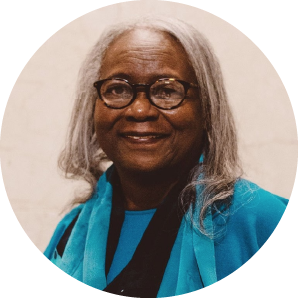
Image of Mary Jackson via Wikimedia
Thanks to the movie Hidden Figures, NASA’s Mary Jackson is among the most famous software engineers in history. Long a math wiz, She began her aerospace career in 1951 at the National Advisory Committee for Aeronautics, which became NASA in 1958. She worked under Dorothy Vaughaun (also featured in Hidden Figures) in the segregated computing unit until she began working in the 4 foot by 4 foot Supersonic Pressure Tunnel. Her supervisor was so impressed he arranged special authorization for Jackson to study engineering in a previously segregated program.
Jackson became NASA’s first black female engineer, and she helped propel Americans to the moon.
Evelyn Boyd Granville
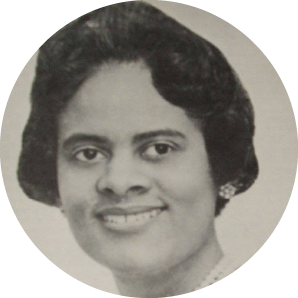
Image via NIST.gov
Evelyn Boyd Granville was born in 1924 in what was then a segregated Washington, D.C. Her family was poor. Her father performed any number of odd jobs to keep a roof over the family’s heads. Life may have been tough, but Granville fell in love with school, where she graduated as valedictorian. Eventually, she became just the second black woman to receive a PhD from an American university (Yale, 1949). She went on to work for IBM as a computer programmer in 1955.
While at IBM, Granville was on the team responsible for the formulation of orbit computations and computer procedures for NASA’s Projects Vanguard and Mercury.
Roy Clay Sr.
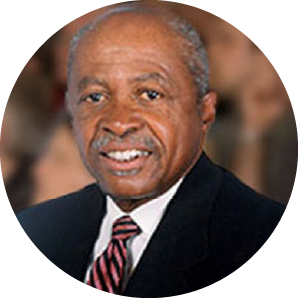
Image via Everipedia
Despite Silicon Valley’s lack of diversity, it would be difficult to imagine the tech industry without Roy Clay Sr. Penned “The Godfather of Silicon Valley,” Clay was born in a small Missouri town and was raised in a home with no indoor plumbing. He went to school in Ferguson, MO, the same community in which Michael Brown was killed at the hands of police. He went on to study mathematics at Saint Louis University where he earned a Bachelors of Science.
In 1958, Clay received a job at the Lawrence Radiation Laboratory, now known as the Lawrence Livermore National Laboratory in California, where he wrote software that demonstrated how radiation particles would spread through the atmosphere after a nuclear explosion.
In 1963, Clay went to work for Control Data Corporation, where he worked on the language FORTRAN. Word got around and in 1965, Clay was hired by David Packard, co-founder of Hewlett-Packard. Packard knew little about software, so Clay became Hewlett-Packard’s software pioneer.
Clay led the team that brought HP’s computer, the 2116A, to market in 1966. He also wrote the software for the 2116A as well. That computer Clay and his colleagues designed was about the size of a typewriter. It not only reduced the size of the computer but improved its reliability.
Source: OneTechStreet
Clay worked his way up to being the top black employee at HP. Eventually, he began his own company, Rod-L Electronics, where he invented the first electric equipment safety testing device. His company was arguably the first Silicon Valley tech startup. Rod-L Electronics is still in business and sells its testers to many electronic manufacturers.
Marc Regis Hannah
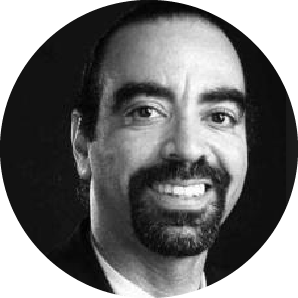
Image via blackpast.org
It would be tough to imagine modern games or entertainment without the influence of electrical engineer and computer graphics designer Marc Regis Hannah. In 1982, Hannah, along with Jim Clark and five others, co-founded Silicon Graphics Inc. (SGI). Hannah was the principal coder for graphics programs like Personal IRIS, Indigo, Indigo2, and Indy Graphics, which were used in movies like Jurassic Park, Beauty and the Beast, Aladdin, The Hunt for Red October, and Field of Dreams.
John Henry Thompson

Image via JohnHenryThompson.com
John Henry Thompson began his career as a self-taught coder. In high school in the 1970s, Thompson taught himself several programming languages, such as FORTRAN, PLI, COBOL, and JCL. He then went on to MIT, where he studied computer science and visual arts.
His goal was to design his own language to bridge the gap between art and technology, which he did. His most famous invention was the language Lingo, which is able to incorporate graphics formats to create multi-media content and applications. Lingo was the primary language for the Adobe Shockwave Platform, which dominated the game and multimedia product market in the 1990s.
Kimberly Bryant
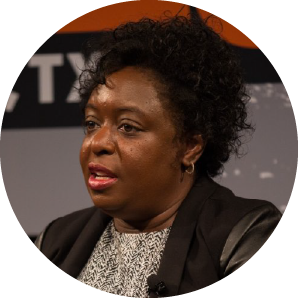
Image via Wikimedia
As an engineering student at Vanderbilt University in the 1980s, Kimberly Bryant felt isolated. There were few if any students who looked like her. When her daughter reached college-age, things weren’t much better. Despite living in the Bay Area, they saw few suitable options for a Woman of Color in tech.
That’s when Bryant founded Black Girls Code, a non-profit designed to encourage black girls to enter the sciences and tech fields by teaching them to code. In 2014, Bryant was named among the Top 25 Most Influential African-Americans in Technology.
Learn about our full-tuition coding bootcamp scholarships, including the We Stand Together Scholarship for students who identify as Black or African-American.
